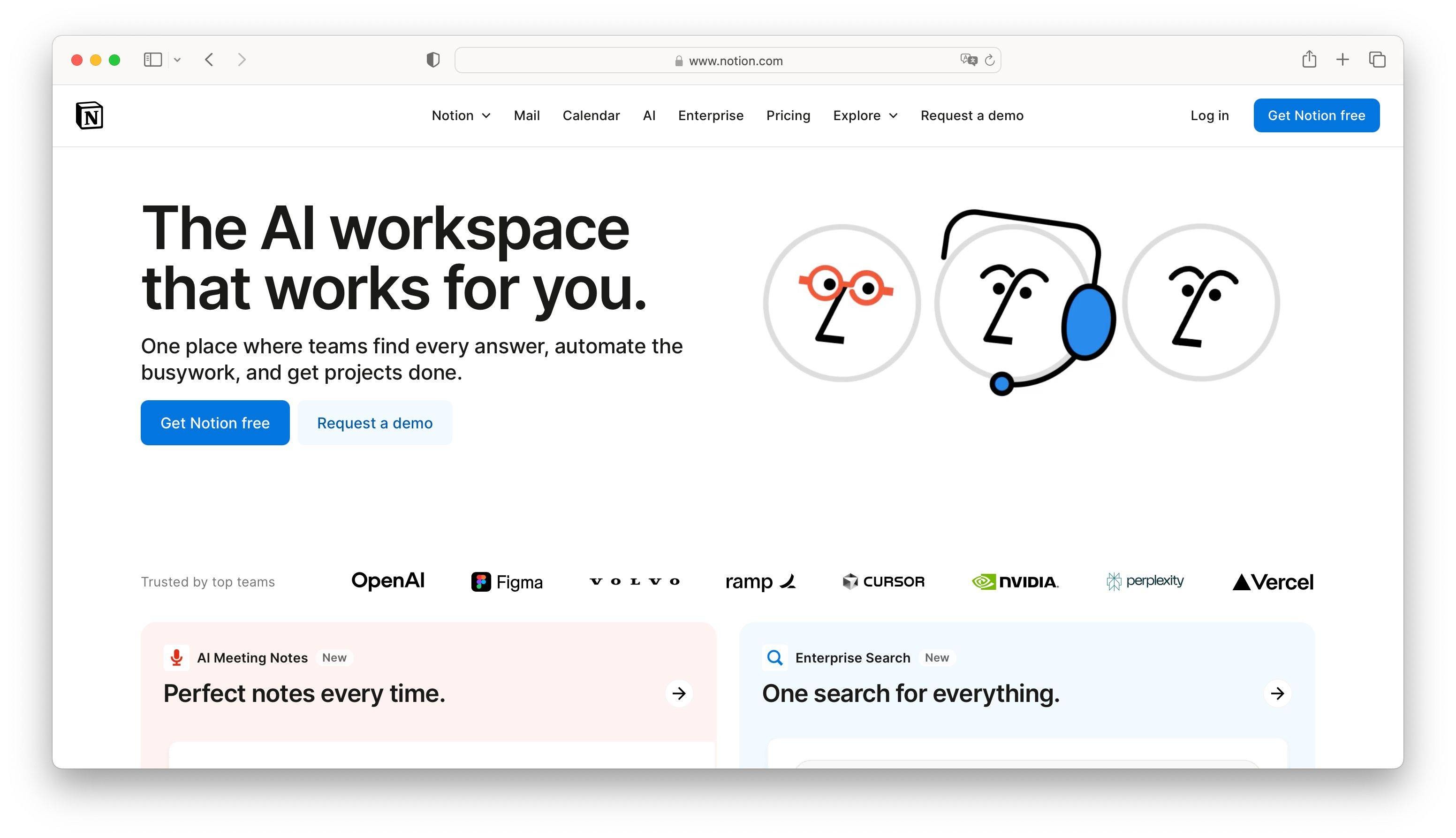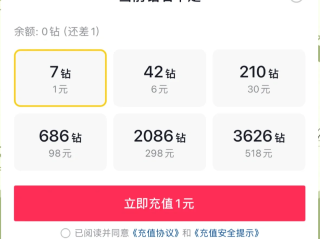NOTIONAI(notionAi官网)
DouJia 2025-09-27 08:30 60 浏览
导语
通过最严格苛刻的循证NOTIONAI,做出的指南共识,是否已经误入歧途?
作者:沿若
来源:医学论坛网
最近,美国心脏病学会和美国心脏协会发布NOTIONAI了一份关于预防、检测、评估和管理成年人高血压的实践指南,这一指南得到NOTIONAI了医学界和新闻媒体的广泛关注。新闻过度覆盖让人想起了类似的事件,及2013年该组织发布的关于胆固醇指南和风险计算的报告,当时也是被媒体大肆报道。这次除了关于指南共识的“新闻”报道之外,似乎还包含对于不确定的、预见性问题的报告。难道是“专家们”搞错了?一个由这两个德高望重的专家组组成的审判组,通过最严格苛刻的循证,做出的指南共识,是否已经误入歧途?
《脂类指南》和《新血压指南》都是冗长、拖沓的文件,内容十分繁杂、长篇大论,事实上,许多提出关注他们的人可能也没有真正读过它们。也许更令人担忧的是,《新血压指南》将一些新的美国人定义为“生病”或者给他们贴上疾病标签的做法受到来自各层级的批评。在胆固醇指南发表后,一些批评者谴责“新指南”将数十亿人变成了他汀类药物的候选人。很快,一些批评家声称太多的人将被定义为高血压,因为那降低的10mmHg诊断门槛。
审核指南的细节后,我们发现超出了这个观点范围的指导。这些指导方针是全面的,并且有高质量的证据支持。每个指南中的每一项共识都提供了一个对应的证据,那些高度关注新指南的人认为那些基于高质量的临床试验证据得共识十分具有争议性,(换句话说就是不信任那些临床试验证据)。那么,问题来了,证据的背书,指南的修改,该指南是否对定义了更多需要治疗的“病人”而负责?
是时候把注意力从指南定义问题上移开,去关注真正的问题:有太多的美国人具有心血管危险因素,使他们处于患病的危险中,包括冠心病(CHD)、中风、外周血管疾病、痴呆、糖尿病、癌症等。美国人的生活方式才是问题所在,媒体把关注力度放在美国人的生活方式上,而不是指南所描述的问题上,对于普及大众健康效果更好。让个人对自己的健康承担更多的责任。
2003年,一项研究显示,90%以上的心肌梗死患者拥有主要不利心血管危险因素。不利因素水平并不意味着临床上说的高风险水平,而是高于总体理想水平(收缩压> 120 mm Hg,舒张压> 80 mm Hg,吸烟,总胆固醇水平> 200 mg/ dL,或糖尿病)。随后的研究表明,在数项主要研究中,没有其中任何一种危险因素(如上所述)的人,与其他人群相比,罹患冠心病的风险降低了90%。
最近,一篇受到媒体广泛关注的文章,研究了健康生活方式对高遗传风险人群冠心病发病率的影响。我们的目标是:判断人是否能够根本上克服与生俱来的遗传风险。
实验研究设计:
受试者按风险因素分为5组,五分之一的高位冠心病风险因素的受试者,其总风险因素约为五分之一低位冠心病风险因素的两倍,一个良好的生活方式(定义为至少3-4健康生活方式)相较于一个不利的生活方式(定义为没有或只有一个健康的生活方式因素),可以显著降低冠状动脉事件的发生率,排除了遗传风险的影响。
在高风险因素受试者的大梯队研究中,良好的生活方式与不健康的生活方式相比,患冠心病的风险更低,10年存活率的绝对比率为5.1%vs10.7%(HR-0.54;95%CI,0.47--0.63)。同样,低风险因素的受试者存活率会因为不利的生活方式所抵消。在最大的队列中,10年内冠状动脉事件发生率在不健康生活方式的受试者中为5.8%,而健康生活方式的则为3.1%。
2010年,基于诸如此类的数据,美国心脏协会致力于定义一种“理想的心血管健康”的新模式。这一提法被称为健康的简单七步法,尽管它们看似简单,但显然这些因素并不容易实现。他们包括:

(1) 禁止吸烟或戒烟;
(2) 空腹血糖水平低于100 mg/dL;
(3) 总胆固醇水平低于200mg /dL;
(4) 血压低于120 / 80毫米汞柱;
(5) 体重指数(以千克为单位,单位为千克,单位为米),在正常范围内(18.5 -25);
(6) 每周至少运动150分钟或每周进行75分钟剧烈运动;
(7) 饮食包括水果、蔬菜、全谷物、低脂奶制品、家禽、鱼和坚果,并限制红肉和糖。
那么,根本问题是指南还是生活方式的问题呢?胆固醇和血压指南其实都强调预防和干预生活方式。人们往往忽略了这一重点,并把重点放在了过度用药的患者身上。然而,数据和指南是明确的:在美国和世界各地有越来越多人超重或肥胖,吃不健康的饮食,没有达到指南推荐的每周锻炼量,或吸烟。结果,越来越多人患者高血压:≥120 / 80毫米汞柱。高血糖:≥100毫克/分升。高血胆固醇水平:≥200毫克/分升。患者和临床医生需要将注意力集中在此地:督促患者健康的生活方式NOTIONAI;首先要预防危险因素;只有在需要的时候,使用药物来降低心血管风险,遵循基于证据的指南建议。
the recent release of a new practice guideline for the prevention, detection, evaluation, and management of high blood pressure in adults—a report from the American College of Cardiology and the American Heart Association1,2—has received substantial attention by the medical community and from the news media. The news overload is reminiscent of similar media attention that accompanied new cholesterol guidelines3 and a new risk calculator4 when those reports were issued by the same organizations in 2013. In addition to the “news” about the guidelines, there have been almost predictable concerns raised as well. How could the “experts” have gotten it so wrong? How could a panel, constituted by these 2 highly respected organizations and with one of the most rigorous approaches to development of practice guidelines, have been so misguided?
Both the lipid guideline and the new blood pressure guideline are lengthy documents, so long and dense, in fact, that many who have raised concerns may not have actually read them. Perhaps more worrisome is that some are leveling criticism at the guidelines for making too many individuals in the United States “sick” or labeling them with a disease. After the cholesterol guideline appeared, some critics decried the fact that the “new guideline” turned billions of people into candidates for statins.5 Now, very quickly, some critics are claiming that too many people will be defined as hypertensive because of a new lower threshold for diagnosis and treatment of hypertension.
Reviewing the details of the guidelines are beyond the scope of this Viewpoint. The guidelines are comprehensive and well supported by high-quality evidence. Every one of the recommendations in each guideline was given a grade of evidence, and many of the recommendations that are considered contentious by some who have raised concern are based on high-quality clinical trial evidence. So, is the problem with the guidelines, with the interpretation of the evidence, or with the notion that, somehow, the guidelines are responsible for defining too many people as having a condition that may require treatment?
It is time to turn attention away from the guidelines as part of the problem and, instead, focus on the real problem: too many individuals in the United States have cardiovascular risk factors that are unhealthy and place them at risk for a host of diseases including coronary heart disease (CHD), stroke, peripheral vascular disease, dementia, diabetes, cancer, and others. The US way of life is the problem, not the guidelines, and those who have raised concerns would do more good if they were to focus on the facts related to the US lifestyle instead of depicting the problem as being caused by the guidelines. Individuals must take more responsibility for their own health behaviors.
In 2003, a study showed that 90% or more of people with myocardial infarction had been exposed to unfavorable levels of major cardiovascular risk factors before the onset of CHD. Unfavorable levels did not mean clinically high, rather simply levels above population ideal levels (systolic blood pressure >120 mm Hg, diastolic blood pressure >80 mm Hg, smoking cigarettes, total cholesterol level >200 mg/dL, or diabetes). Subsequent studies showed that individuals in several major US population studies who did not have unfavorable levels of any of the major risk factors (as above) experienced a 90% lower lifetime risk of coronary heart disease compared with the rest of the population.7
Recently, an article that received much media attention examined the association of healthy lifestyle factors on the incidence of CHD among people at high genetic risk.8 The goal was to determine whether a person could, in essence, overcome his or her inherent genetic risk. Among individuals in the top quintile of genetic risk for CHD, for whom overall risk was nearly twice that compared with those in the lowest-risk quintile, a favorable lifestyle (defined as at least 3 of 4 healthy lifestyle factors) was associated with a substantially lower risk of coronary events than an unfavorable lifestyle (defined as no or only 1 healthy lifestyle factor), regardless of the genetic risk category.

Among study participants at high genetic risk, a favorable lifestyle was associated with a lower risk of coronary events than an unfavorable lifestyle, with absolute rates of 5.1% in 10 years vs 10.7% in the largest cohort (hazard ratio, 0.54; 95% CI, 0.47-0.63). Similarly, a low genetic risk was offset by an unfavorable lifestyle. In the largest cohort, standardized 10-year coronary event rates were 5.8% in those with an unhealthy lifestyle compared with 3.1% in those with a healthy lifestyle.
In 2010, based on data such as these, the American Heart Association aimed to define a new model of “ideal cardiovascular health.”9 The factors in this formulation have been referred to as Life’s Simple Seven and, although they may seem simple, these factors are apparently not easy to attain. They are (1) no smoking or stop smoking; (2) fasting blood glucose level below 100 mg/dL; (3) total cholesterol level of less than 200 mg/dL; (4) blood pressure below 120/80 mm Hg; (5) body mass index (calculated as weight in kilograms divided by height in meters squared) in the normal range (18.5-25); (6) exercise at least 150 minutes at moderate intensity or 75 minutes of intense exercise per week; and (7) eat a diet that includes fruit, vegetables, whole grains, low-fat dairy products, poultry, fish, and nuts and limits red meats and sugar.
So, is the problem fundamentally with the guidelines or with the US lifestyle? Both the cholesterol and blood pressure guidelines prominently emphasize prevention and lifestyle habits.1,3 Some who have raised concern about the guidelines have often overlooked this emphasis and have focused on over medicating patients. However, the data and the guidelines are clear: too many individuals in the United States and around the world are overweight or obese, eat unhealthy diets, fail to get recommended amounts of weekly exercise, or smoke. As a consequence, too many patients have high blood pressure: above the ideal level of 120/80 mm Hg. Too many have unhealthy blood glucose levels: above the ideal level of 100 mg/dL fasting. Too many have high blood cholesterol level: above the ideal of 200 mg/dL. The problem is not the result of rigorously developed guidelines, but rather is inherent in the high prevalence of unfavorable cardiovascular risk factors. Patients and clinicians need to focus attention where it belongs: on promotion of healthy lifestyles; prevention of the risk factors in the first place; and only when needed, use drugs to reduce cardiovascular risk, following evidence-based recommendations.
参考文献:JAMA. Published online December 14, 2017. doi:10.1001/jama.2017.19675
1.Whelton PK, Carey RM, Aronow WS, et al. ACC/AHA/AAPA/ABC/ACPM/AGS/APhA/ASH/ASPC/NMA/PCNA: guideline for the prevention, detection, evaluation, and management of high blood pressure in adults: a report of the American College of Cardiology/American Heart Association Task Force on Clinical Practice Guidelines [published online November 7, 2017]. J Am Coll Cardiol.doi:10.1016/j.jacc.2017.11.006PubMedGoogle Scholar
2.Whelton PK, Carey RM. The 2017 clinical practice guideline for high blood pressure. JAMA. 2017;318(21):2073-2074.PubMedGoogle ScholarCrossref
3.Stone NJ, Robinson JG, Lichtenstein AH, et al; American College of Cardiology/American Heart Association Task Force on Practice Guidelines. 2013 ACC/AHA guideline on the treatment of blood cholesterol to reduce atherosclerotic cardiovascular risk in adults: a report of the American College of Cardiology/American Heart Association Task Force on Practice Guidelines. Circulation. 2014;129(25)(suppl 2):S1-S45.PubMedGoogle ScholarCrossref
4.Goff DC Jr, Lloyd-Jones DM, Bennett G, et al; American College of Cardiology/American Heart Association Task Force on Practice Guidelines. 2013 ACC/AHA guideline on the assessment of cardiovascular risk: a report of the American College of Cardiology/American Heart Association Task Force on Practice Guidelines. Circulation. 2014;129(25)(suppl 2):S49-S73.PubMedGoogle ScholarCrossref
5.Ioannidis JP. More than a billion people taking statins? potential implications of the new cardiovascular guidelines. JAMA. 2014;311(5):463-464.PubMedGoogle ScholarCrossref
6.Greenland P, Knoll MD, Stamler J, et al. Major risk factors as antecedents of fatal and nonfatal coronary heart disease events. JAMA. 2003;290(7):891-897.PubMedGoogle ScholarCrossref
7.Lloyd-Jones DM, Wilson PW, Larson MG, et al. Framingham risk score and prediction of lifetime risk for coronary heart disease. Am J Cardiol. 2004;94(1):20-24.PubMedGoogle ScholarCrossref
8.Khera AV, Emdin CA, Drake I, et al. Genetic risk, adherence to a healthy lifestyle, and coronary disease. N Engl J Med. 2016;375(24):2349-2358.PubMedGoogle ScholarCrossref
9.Lloyd-Jones DM, Hong Y, Labarthe D, et al; American Heart Association Strategic Planning Task Force and Statistics Committee. Defining and setting national goals for cardiovascular health promotion and disease reduction: the American Heart Association’sstrategic Impact Goal through 2020 and beyond. Circulation. 2010;121(4):586-613.PubMedGoogle ScholarCrossref
10.Younus A, Aneni EC, Spatz ES, et al. A systematic review of the prevalence and outcomes of ideal cardiovascular health in US and non-US populations. Mayo Clin Proc. 2016;91(5):649-670.
.....
相关推荐
-

- 2020世界人工智能大会签约项目,2020世界人工智能大会
-
“人工智能不仅有量的发展2020世界人工智能大会,还有质的突破,人工智能已经走向2.0时代。”29日,在天津举办的首届世界智能大会上,中国工程院院士潘云鹤表示,过去人工智能更注重机器如何模仿一个人的智能,但现在人工智能科学家的想法已经发...
-
2025-11-29 05:30 DouJia
- 最近圣诞拍照软件,今年圣诞写真就用AI这么拍
-
临近新年今年圣诞写真就用AI这么拍,刚刚在澳门第八届国际电影节获得最佳女配角今年圣诞写真就用AI这么拍的爱新觉罗启星为某杂志拍摄的一组圣诞主题写真曝光。充满浓浓节日气氛的画面中今年圣诞写真就用AI...
-

- dota6.74cai的简单介绍
-
玩过魔兽的你相信对这家玻璃渣公司一定不会陌生暴雪爸爸、暴雪爹爱它的粉丝对他趋之若鹜;《魔兽争霸》系列是暴雪的招牌系列之一是无数上个世纪八九十年代出生的年轻人儿时游戏启蒙作之一在那个游戏并没有出生在今天这么丰富繁杂的年代当年网吧里放眼望去...
-
2025-11-28 15:30 DouJia
- 跟百度AI聊聊天:探索人工智能的新边界,和百度聊天
-
在这个科技飞速发展的时代,人工智能已经不再是一个遥不可及的概念。百度作为中国领先的互联网科技公司,其研发的百度AI不仅在搜索引擎领域取得了显著成就,而且在人工智能对话系统方面也展现出了强大的实力。今天...
- 生成式AI:未来创作的新引擎,生成式ai有哪些
-
在当今科技迅猛发展的时代,生成式人工智能(AI)已经逐渐成为我们日常生活中不可或缺的一部分。无论是用于创作艺术作品、编写文章、生成音乐,还是辅助科学研究,生成式AI正以前所未有的方式拓展着人类的创造力...
- AI助手:不仅仅是技术,更是娱乐伙伴,游戏ai助手
-
在科技日新月异的今天,AI助手已经不再是冷冰冰的工具,它们正变得越来越有趣,甚至能够与我们共享人类文化中的“梗”(网络流行语或者幽默元素)。这些AI助手不仅仅是执行命令的机器,它们正在成为我们的娱乐伙...
-

- AI智能写作神器推荐(ai智能写作神器推荐下载)
-
1、DeepSeek在自然语言处理领域表现卓越AI智能写作神器推荐,具备强大AI智能写作神器推荐的推理能力和创作能力,能应对科技学术文学等多个领域的文本生成然而,在生成内容时偶尔会出现AI幻觉问题,即生成一些看似合理但实际与事实不符的内容豆...
-
2025-11-28 08:30 DouJia
- 97ai蜜桃(永莲蜜桃几月份成熟)
-
夏日正当时97ai蜜桃,桃子也成熟97ai蜜桃了,水灵灵粉粉的桃子,又大又红,好像这一整个夏天都被它承包了!7月27日周四,受同光EMBA39期组织委员胡海涛胡总的热情邀请,同光平台精英同学们...
-

- 轻松拍照不求人AI相机来帮忙(but拍照)
-
1.我一直记得我爱过你。 2.慷慨天秤基本都小气。 3.天秤座是另一种幼稚园里的人物。 4.天秤座是完美的女王和一流的病人。 5.天秤座无所不说轻松拍照不求人AI相机来帮忙,但是每次说完之後轻松拍照不求人AI相机来帮忙,轻松拍...
-
2025-11-27 22:30 DouJia
-

- 好用的aiapp,好用的AI
-
一副AR眼镜让工程师可以远程修理发动机一件心电智能衣就能准确获得你身体各项数据一个智能音箱能成为孩子们学习的趣味伙伴……这些都不是想象它们都出现在联想第三届全球创新科技大会 7月20日好用的AI,联想集团以“让世界充满AI”为主题的第...
-
2025-11-27 15:30 DouJia
- 笔灵AI:书写未来的智能伙伴,笔灵aiAPP下载
-
在这个飞速发展的时代,人工智能技术正逐渐渗透到我们生活的方方面面。从家居自动化到工业生产,从医疗诊断到艺术创作,AI的身影无处不在。然而,当我们将目光转向写作领域,一个名为“笔灵AI”的概念应运而生,...
- <!DOCTYPEhtml>,ai办公是什么意思
-
<!DOCTYPEhtml>AI学习办公助手邀你体验在数字化时代,人工智能(AI)技术的飞速发展已经改变了我们的工作和学习方式。...
- 会员中心
-
- 百度热搜
- 新浪热搜
- 最新抖音
-

抖音短视频:带你走进玉石世界的神秘之旅,抖音在线看短视频挖玉是真的吗
在快节奏的现代生活中,短视频平台抖音(TikTok)已经成为了人们消磨时间、获取信息的重要方式。最近...

抖音短视频:现代幽默的快速通道,看抖音搞笑片
在这个快节奏的时代,人们的生活节奏越来越快,工作压力也越来越大。在这样的背景下,抖音作为一个短视频平...

抖音在线观看:探索无限乐趣的新窗口,抖音网址怎么看抖音
在这个信息爆炸的时代,短视频平台已经成为人们获取娱乐、知识和灵感的重要渠道。抖音,作为全球最受欢迎的...

官方抖音软件下载,抖音app官网免费下载17.81
在现代社会巨大抖音app官网免费下载17.81的竞争压力下抖音app官网免费下载17.81,长时...

抖音充值抖币1:10(抖音充值抖币官网入口)
之前有一篇文章,叫做《被抖音毁掉的年轻人》。大概意思是说,短视频、微博、微信占据了年轻人太多时间...

抖音晨曦姐姐男生照,抖音晨曦姐姐男生照片真实
斗玩网(d.chinaz.com)原创:近日抖音上有一位叫摇呼啦圈的玩家火抖音晨曦姐姐男生照了抖...

抖音名称昵称男生,抖音名称.昵称男
无论是对于已经出生的宝宝抖音名称.昵称男,还是即将出生的宝宝抖音名称.昵称男,对他们而言抖音名称...

抖音头像男士专用2023款励志,抖音头像男士专用2023款
安全目视化管理抖音头像男士专用2023款: 1、安全帽佩戴不规范,都未系好安全帽帽带;...
- 最新快手
-

抖音在线挖玉:短视频里的宝石探秘之旅,抖音挖矿赚钱app下载
在数字时代的浪潮下,短视频平台如抖音已经成为人们获取信息、娱乐消遣的重要渠道。近年来,抖音上兴起了一...

抖音短视频:现代人的快乐源泉,我想看抖音里的搞笑片
在这个快节奏的时代,人们越来越需要快速、轻松的娱乐方式来缓解压力。抖音短视频平台以其搞笑内容的丰富性...

探索抖音在线观看的无限世界,抖音在线网址打开
在这个数字时代,短视频平台已经成为人们日常生活中不可或缺的一部分。抖音,作为其中的佼佼者,凭借其丰富...

快手下载的视频怎么去掉快手号,快手下载视频怎么去掉快手号水印
现在我要给大家介绍这样一款游戏快手下载的视频怎么去掉快手号,这款游戏自从推出就登上了各大平台快手...

快手小游戏破解版游戏大全(快手小游戏破解挂)
快手小游戏破解版游戏大全我的世界中国版红石发射器合成攻略中国版红石发射器怎么合成?红石发射器是...

快手下载最新版本2023红包版,快手下载最新版本2023
第二步快手下载最新版本2023,打开豌豆荚搜索界面搜索“快手”快手下载最新版本2023,然后在搜索结...

快手下载别人作品对方知道吗,快手下载别人作品会不会有提醒
1、1快手下载人家作品知道快手下载别人作品对方知道吗,因为会有下载记录,只要访问别人的主页查看作品的...

下载快手app(下载快手app下载)
打开手机的浏览器下载快手app,进入快手的官方首页在官方首页上,通常会有下载快手APP的链接或按钮点...
- 热门关注

 滇公网安备53310202533258
滇公网安备53310202533258